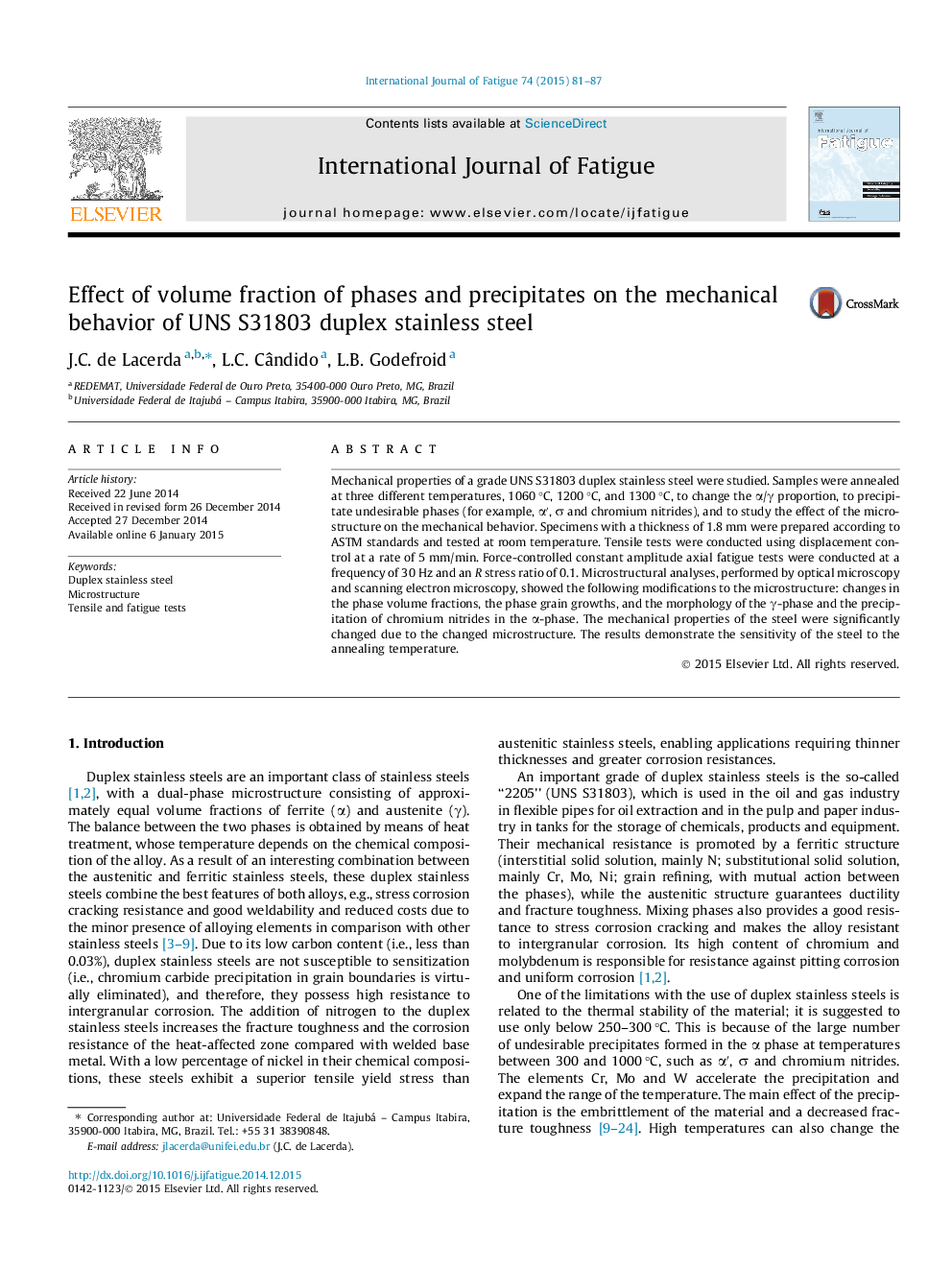| Article ID | Journal | Published Year | Pages | File Type |
|---|---|---|---|---|
| 776663 | International Journal of Fatigue | 2015 | 7 Pages |
•Annealing temperatures changed grain size and volume fraction of the α/γ phases.•Increasing ferrite fraction favored the precipitation of chromium nitride.•Microstructural changes caused a decrease in the fatigue crack resistance.•Growth of fatigue cracks was facilitated in the ferritic phase.•The results demonstrated the sensitivity of the steel to the annealing temperature.
Mechanical properties of a grade UNS S31803 duplex stainless steel were studied. Samples were annealed at three different temperatures, 1060 °C, 1200 °C, and 1300 °C, to change the α/γ proportion, to precipitate undesirable phases (for example, α′, σ and chromium nitrides), and to study the effect of the microstructure on the mechanical behavior. Specimens with a thickness of 1.8 mm were prepared according to ASTM standards and tested at room temperature. Tensile tests were conducted using displacement control at a rate of 5 mm/min. Force-controlled constant amplitude axial fatigue tests were conducted at a frequency of 30 Hz and an R stress ratio of 0.1. Microstructural analyses, performed by optical microscopy and scanning electron microscopy, showed the following modifications to the microstructure: changes in the phase volume fractions, the phase grain growths, and the morphology of the γ-phase and the precipitation of chromium nitrides in the α-phase. The mechanical properties of the steel were significantly changed due to the changed microstructure. The results demonstrate the sensitivity of the steel to the annealing temperature.
